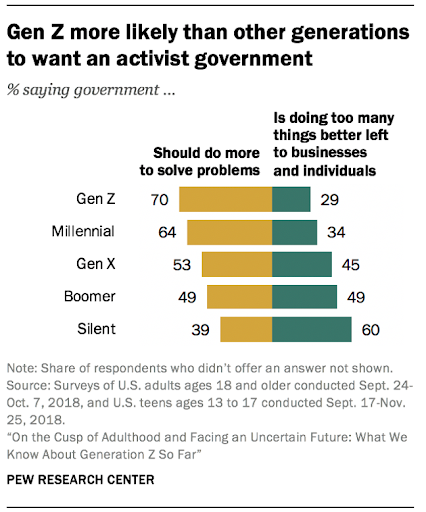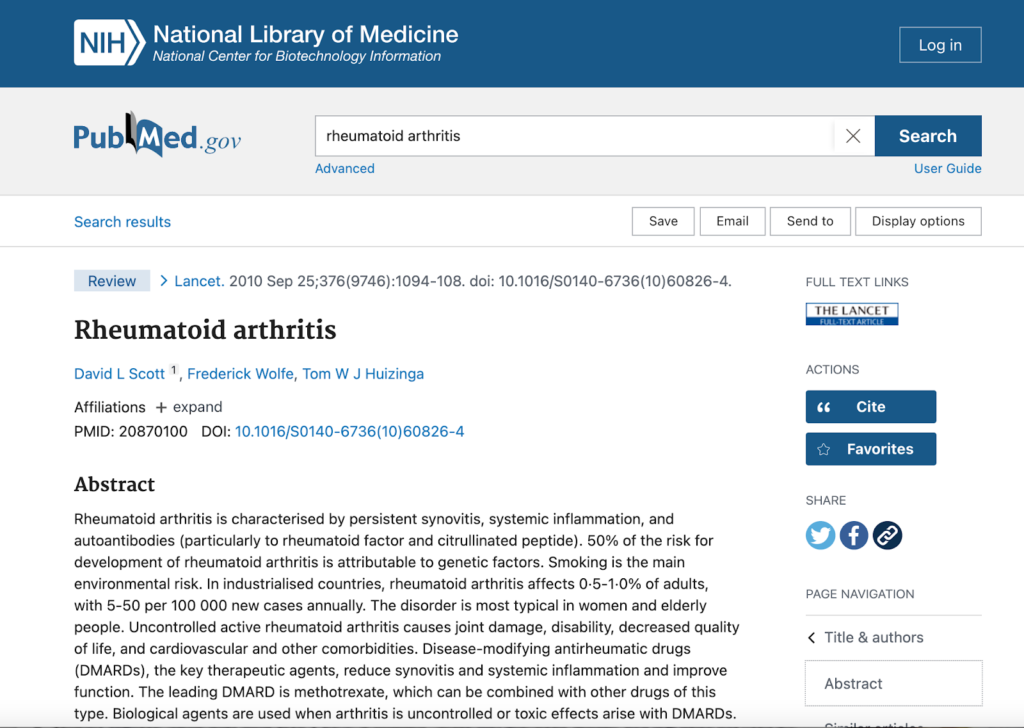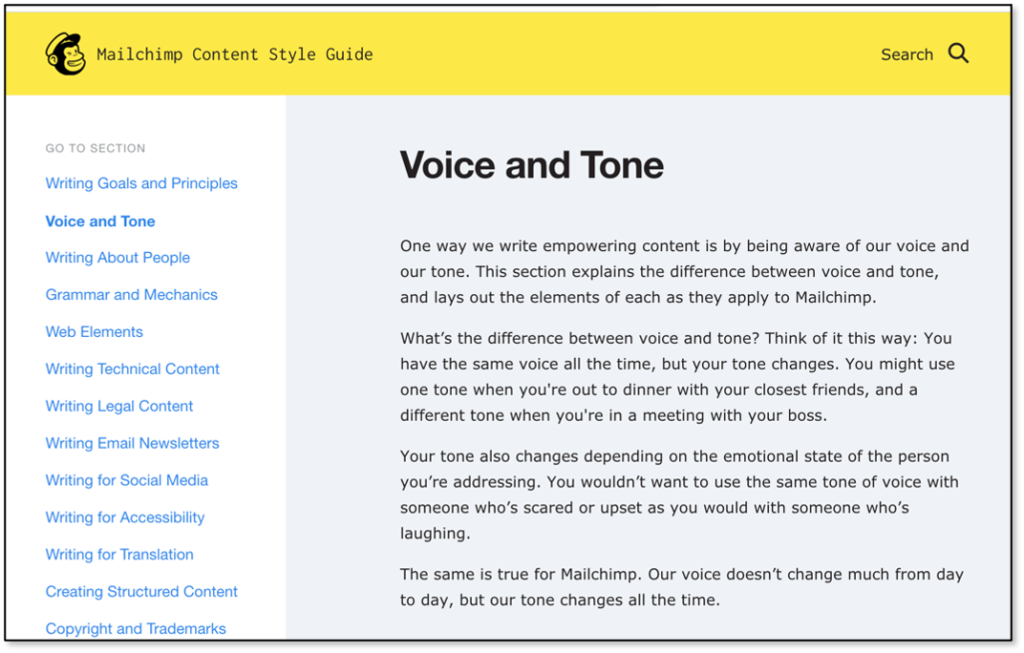
Content credibility is a different issue now compared to even a few years ago. If you’ve never thought much about whether your content seems credible, you’re not alone. But now is the time to turn your attention to it. If you have thought about it, kudos to you! And now is the time to consider whether your organization is doing enough. To help you start, this article explains why content reputation matters and walks through several tips to protect and even enhance it.
Why Care About Content Credibility Now?
I could talk for days about why, but let’s focus here on three key reasons to turn your attention to content credibility today.
You Have More Content Competition Than Ever Before
Every organization is competing on content. If your organization is not a business, you might not think you’re competing. But when it comes to content, you’re competing for people’s attention. More and more brands, organizations, and individuals talk about more and more topics. For instance, 4 million blog posts publish every day. Will your content stand out? Will your content be what everyone else references, or will your content be derivative?
And You’re Competing Against an Onslaught of Misinformation
I’ve discussed the rise of disinformation here and here and here. It won’t be going away anytime soon. From deep fakes to false ads to robot trolls to product scams to influencers amplifying conspiracy theories, this new competition is causing new problems.
Among those problems is attacking sources of truth. Take a look at Centers for Disease Control and Prevention. For years, it has earned recognition as the most trusted U.S. government agency. A big reason for that trust is the agency’s reliance on science to back all of its information. Fast forward to 2020, and conspiracy rumors spread across social media, and extreme media like Breitbart and Information Wars used CDC’s science focus to undermine its credibility. Science was even questioned by members of the Trump administration as part of a deep state conspiracy. Information from CDC was stalled. False information about CDC, the pandemic, and the vaccines spread. While you might not ever be directly attacked like CDC was, a foundation of your content’s credibility, like science, is likely to be. At any time. With no warning. What will you do?
You Might Be Unknown or Uninteresting to New Audiences Like Generation Z
Generation Z is growing up. If they’re not already part of your audience or customer base, they will be soon. And chances are they don’t know or care who you are. Comprised of the first digital natives, this generation has never known life without smart phones, social media, and quick access to content. One of these digital natives put their perspective this way:
“Generation Z takes in information instantaneously and loses interest just as fast.”
In the U.S., this generation is also the most multicultural. And if your organization is a government agency, there is an up side. Unlike every other generation and despite the misinformation spreading, this Generation Z would like to see government more involved in solving problems, as Pew Research has found.

So, as you face this generation, what will it take to get and keep their attention? What does it mean for your content to be credible to Generation Z?
To sum it up, your content can add to the noise in the misinformation age, or it can become a credible authority. So let’s explore tips to strengthen the credibility of your organization’s content.
3 Tips for Content Credibility in the Short Term
Let’s focus on tips that your organization can act on quickly.
1. Don’t Over or Under Attribute Sources and Citations
Clarifying the source or author might sound basic, but it quickly gets complicated. I often see two extremes: Too little attribution and too much attribution. Too much attribution might surprise you, so let’s discuss it further. Showing many sources, partners, authors, or citations can backfire because people become confused instead of confident. For instance, in the course of doing some content testing, we discovered that a page like this in Pubmed overwhelmed even experienced participants.

It’s not hard to see why. We have an NIH logo, a PubMed logo, a journal logo (The Lancet, in this case), plus many names of organizations and people. One participant even noted in our testing, “I’m confused about the source.”
Consider how you can simplify and clarify the source, author, or citations in your content. For example, Sharecare does a nice job of showing their partnership with Boston University on the Community Well-Being Index.

Now let’s turn to another tip for boosting content credibility.
2. Do Define Voice for Differentiation and Inclusivity
There are many reasons to revisit voice today, including credibility. Differentiating your perspective will set your content apart from the noise. For example, Mailchimp very publicly evolved its voice to convey its maturity into a marketing platform and its commitment to inclusivity. Voice helps set Mailchimp apart from less sophisticated tools and less progressive companies.

And multicultural Generation Z will tolerate nothing less than inclusive language. You simply will not be credible to this generation without an inclusive voice.
For some great examples and resources for tackling voice, don’t miss this article about content voice or our recent webinar with Acrolinx and CMS Wire.
This tip leads us into the third tip, where you will want to put your distinct and inclusive voice to work.
3. Don’t Leave a Void for Misinformation to Fill
When it comes to responding to an urgent topic, an emergency, or even a misinformation attack, say something useful quickly or others will say anything. (And it often will not be useful.) Going back to the CDC example, the attacks worked well partly because the Trump administration delayed CDC in responding. That silence allowed the noise of conspiracy theories, rumors, myths, and other disinformation to become unignorably loud.
Now, being forced into silence is unusual. What’s more common is staying silent in the hopes that the noise will subside on its own. That might have worked 10 years ago, but it won’t work today. Say something useful to counterbalance and even drown out the noise.
If that sounds easier said than done, then you need a content playbook for response. For instance, Digital Services Georgia can rapidly post and update “superservice” pages about a range of topics and tasks. They can quickly aggregate information across state agencies as it becomes available or updated. This play requires the right technical capability, the right templates, the right style guidance, and the right people and process to execute.

As another example, American Academy of Dermatology learned to shift content gears during the pandemic last year. Don’t miss this useful breakdown of their experience.
Not sure where to start with a content playbook? Our content playbook resource center can help you start drafting one.
If you’ve read this far, you’re a good sport. So I’m going to share a couple of bonus tips, with a longer term view of content credibility in mind.
- Support nonprofits studying and combatting disinformation.
Your organization or you as an individual can support nonprofits like Pew Research, CDC Foundation, Stronger, Snopes, PolitiFact, and so many others as they fight misinformation. Content Science, for example, donates 10% of our revenue from online sales (subscriptions, registrations, etc.) to such work. - Demand platforms and publishers do better to prevent misinformation.
If your organization pays platforms where misinformation runs rampant (such as Twitter, Facebook, YouTube, and Amazon), ask them directly to do more about it. You are their customer, so you have a compelling voice. Also, consider asking your government representatives to make controlling misinformation a priority.
To sum up, we’re living in the misinformation age, which brings new content competition and an emerging new audience, Generation Z. To stand out from the competition and to appeal to this generation, put content credibility high on your to-do list. For even more tips and examples, check out this recording and slide set from our recent webinar.
Events, Resources, + More
The Ultimate Guide to End-to-End Content
Discover why + how an end-to-end approach is critical in the age of AI with this comprehensive white paper.
The Content Advantage Book
The much-anticipated third edition of the highly rated book by Colleen Jones is available at book retailers worldwide. Learn more!
20 Signs of a Content Problem in a High-Stakes Initiative
Use this white paper to diagnose the problem so you can achieve the right solution faster.
Upskill with Content Science Academy
Training for modern content roles through on-demand certifications + courses or live workshops.






Comments
We invite you to share your perspective in a constructive way. To comment, please sign in or register. Our moderating team will review all comments and may edit them for clarity. Our team also may delete comments that are off-topic or disrespectful. All postings become the property of
Content Science Review.